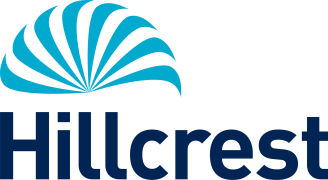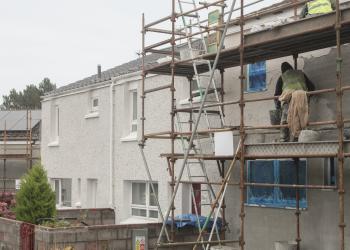Hillcrest Homes planned and delivered sustainable retrofits for energy-efficient homes across Tayside.

Hillcrest Homes
Go To WebsiteAddressed Challenges:
- Tech & innovation
- Carbon emissions
- Greater fairness/ Just transition
Action Areas:
- Energy
Initiative Purpose:
- Mitigation & Adaptation
The Story
This initiative focused on enhancing the energy efficiency and sustainability of residential properties through innovative retrofit solutions. It addressed the urgent need to reduce energy consumption, lower carbon emissions, and alleviate the financial burden of energy costs on tenants.
With rising energy prices and an increasing emphasis on reducing carbon footprints, Hillcrest Homes began identifying properties to upgrade to a significantly higher energy efficiency standard. Some of the older housing stock was becoming dated in terms of glazing, insulation and heating systems.
The initiative focused on retrofitting homes across Tayside to make them both environmentally friendly and cost-effective for residents. Activities included:
- Installing photovoltaic (PV) panels on residential buildings. Tenants have since enjoyed significant reductions in their energy bills, demonstrating the tangible benefits of renewable energy.
- Fitting high-performance insulation, external cladding and air source heat pumps. These upgrades are designed to maximise energy efficiency and improve overall home comfort.
- Installing high-performance double-glazed sash and case windows on select period properties, which has not only preserved the heritage value but also drastically improved thermal performance of these homes.
- Installing injected internal wall insulation, a method that enhances insulation without compromising internal space.
The success of this initiative has been bolstered by collaboration with several key stakeholders and organisations. Hillcrest Homes has worked closely with local planning authorities, particularly in conservation areas, to secure the necessary approvals for sensitive projects. Funding bodies have played a critical role in financing these large-scale retrofits, making it possible to deliver high-quality solutions without imposing costs on tenants.
Furthermore, Hillcrest Homes’ internal teams – including Asset Management, Sustainability, and Maintenance – have coordinated seamlessly to conduct feasibility studies, secure funding, and ensure timely project delivery. Their collective expertise has been instrumental in navigating the technical and logistical challenges of such a multi-faceted initiative.
This initiative has had a profound impact on the communities it serves. Beyond reducing energy bills and enhancing comfort, it has set a benchmark for sustainable housing solutions. It showcases how retrofitting existing homes can contribute to broader environmental goals while delivering immediate benefits to residents.
Success & Outcomes
We will measure the success of this initiative through several key metrics: reductions in tenant energy bills, the number of retrofitted properties, and the overall improvement in energy efficiency (kWh saved). We also track the increase in renewable energy production through installed PV panels and the reduction in carbon emissions. Tenant feedback and satisfaction surveys provide qualitative insights into comfort improvements. So far, tenants have reported significant savings and increased comfort, while our data shows a marked reduction in energy consumption and a growing number of homes benefiting from sustainable upgrades.
Advice for others looking to do something similar
Embarking on a sustainable retrofit project is an exciting and impactful journey. Here’s our advice for others looking to undertake similar initiatives:
- Start by understanding the specific needs of your properties and tenants. Conduct energy audits to identify areas with the greatest potential for improvement. Look at existing case studies and similar projects for inspiration and best practices.
- Reach out to other housing associations, sustainability experts, and energy efficiency organisations. We found it particularly useful to connect with funding bodies and environmental agencies early on to explore available grants and incentives.
- Make use of guides from national retrofit programs and government sustainability initiatives. Online resources and webinars can provide valuable insights into the latest technologies and regulations.

